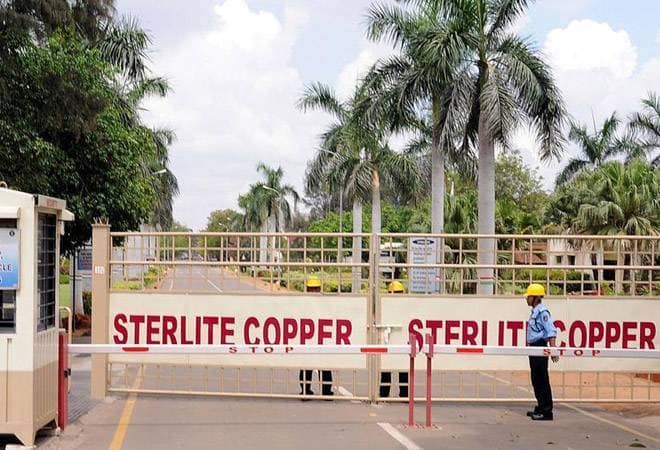It has been more than one year since the closure of Vedanta’s Sterlite plant in Tuticorin serving a clear example of how bad politics could lead to bad economics. The closure of the Sterlite plant does not only hurt the copper industry but also thousands of medium and small sector units whose businesses were dependent on Vedanta’s plant. The ‘negative spillover effect’ of the plant closure had an impact reverberating through the electrical industry, building and construction industry, automobiles industry and consumer durables industry.
The owner of Sterlite Copper, Anil Agrawal led Vedanta group has told Madras High Court that the anti-Sterlite protest was funded by Chinese companies which benefit from the closure of the plant. “These companies promoted and funded the agitations and protests against Sterlite. India’s import bill for copper is $2 billion, the demand was being met by Sterlite earlier,” claimed Aryama Sundaram, the legal counsel for Vedanta group before the special bench of the court comprising Justice T S Sivagnanam and Justice V Bhavani Subbaroyan.
Since the closure of Vedanta’s plant, 38 percent of country’s copper demand is being met through imports from foreign firms. “There is a direct economic, financial interest of the foreigners in this,” said Sundaram. “Foreign manufacturers are benefiting from this and the profit goes to them. The import bill for copper is $2 billion, which Sterlite used to satisfy earlier,” he added.
The company also paid 2,200 crore rupees in tax to the government. The Tamil Nadu government had ordered complete closure of the plant in May 2018. But the National Green Tribunal (NGT) cleared the reopening of the plant a few months back. However, the Supreme Court overruled the NGT order and the plant remains non-operational. The matter is sub-judice and the case is pending in Madras High Court.
Tuticorin plant produced 400,000 tonnes per annum, accounting for 40 percent of total copper production in the country. After its closure, total production of India fell by 47.1 percent while the above 40 percent drop was due to the shutdown of smelters of Hindustan Copper (HCL) and Hindalco for maintenance purposes. Vedanta’s Tuticorin plant had a share of 35 per cent in India’s primary copper market and exported the metal to Asian and Gulf nations. India’s copper demands have grown consistently over the years and the intentions of Chinese firms to uproot Indian firms to capture the Indian market does not come out as a surprise.
According to estimates by Engineering Export Promotion Council (EEPC), the closure of the plant cost around 3 billion dollars in a year due to direct and indirect losses. More than 400 businesses across the country and primarily in Tamil Nadu were hit due to the closure of the plant. The domestic demand has been filled with import from China, India was going to be a major exporter of copper in the next few years but the closure of the plant forced the country to import the metal from China. The export of metals fell by 61 percent to 127.43 million dollars in FY 19 due to closure of the plant.
The Anil Agarwal led Sterlite Copper, the company which operated the Tuticorin plant registered a loss of 409 crore rupees in FY 19 compared to 905 crore rupees it logged as profit in the previous year. This results in an effective loss of almost 1,300 crore rupees even if we keep the company’s production constant. The plant alone was responsible for 3.3 percent of state GDP and employed 3,500 people directly and 20,000 people indirectly.
The state governments should have a more cooperative attitude towards industries. Only initiatives from central government will not help in economic rise of the country unless every state government is willing to cooperate with industries. It was found that the church was involved in organizing the protests against Vedanta’s Sterlite plant.
Swarajya had earlier reported that the churches in the region had appealed to its members to support the Sterlite protest. The magazine had also reported that one of the mobs, comprising of around 5,000 people, had gathered in front of one of the churches in the region before it proceeded to wreak havoc. The article goes on to claim that according to the Intelligence Bureau, there were Naxal elements among the protestors too and that the police had been tipped off about this. The protests had found traction among many politicians in Tamil Nadu including Kamal Haasan. So, it seems that the nexus between the some Church elements, Naxals and the foreign, particularly the Chinese competitors of Vedanta, may have succeeded in hurting the economic interests of India, Tamil Nadu, and the poor people in the region due to the lackluster attitude of state government.
